Dear Congregation Beth Israel members and friends,
As I write these words, Chanukah is almost upon us. (Chanukah begins on the 25th of Kislev, which this year corresponds to the evening of Thursday, December 7.)
The big mitzvah associated with Chanukah is pirsumei nisa, “publicizing the miracle.” Tradition teaches us to place the Chanukah lights someplace where they will be seen. (Unless we fear for our lives, in which case tradition permits us to keep our light under the proverbial bushel.) We display our lights to publicize the miracle: the oil that lasted until new oil could be made; the leap of faith that led us to kindle light in the first place; the miracle of hope in times of despair.
Especially this year, holding fast to hope and to Jewish joy feels like a radical act… and a necessary one.
One way to participate in the mitzvah of pirsumei nisa this year is to attend a public menorah lighting. If you want to “menorah-hop,” on Thursday, December 7 there’s a 4:30pm public menorah lighting at the bottom of Spring Street in Williamstown, and an hour later there will be a 5:30pm public menorah lighting at City Hall in North Adams.
Whether or not you make it to one of the town or city menorah lightings, I hope you’ll join us at CBI for our annual Chanukah Bonfire & Songfest, this year taking place at 5:30pm on Monday, December 11 right after Jewish Journeys lets out. Bring your own camp chair; we’ll provide the bonfire, hot cider, and homemade latkes and sufganiyot courtesy of Jen Burt!
This year Chanukah feels alive to me in a deeper way – for a very tangible reason. Back in June a few of us from the CBI community traveled together to Israel, and on our last day there we participated in an archaeological dig at Tel Maresha. Our guide described it as “a suburb from 2200 years ago” – the time of the Hasmoneans, e.g. the time of the Chanukah story.
There is a large tel, a layered hill showing evidence of thousands of years of civilizations one atop the next. There is also a cave system that contains 5000 caves, and that’s where we were digging. These aren’t natural caves. They were the quarries from which the stone was taken to build the city above, which is long since destroyed. The quarries were turned into a giant network of basements and places of industry – for instance, one cave held a giant stone press for pressing olive oil. The city is gone, but the caves remain, filled up with dirt over the millennia. Archaeologists dig through the layers… sometimes, with help from tourists like us.
After a quick lesson in how the dig process works, we sat on the floor of the cave (well, the current floor; when they began digging, the dirt was 20 feet higher, and they think it goes another few meters down at least). We used picks to loosen the dirt, then went through it by hand, putting rocks in one bucket, dirt and tiny rocks in another, and “finds” in a third. Finds are potsherds, bits of bone, bits of charcoal. Everyone in our group found these things. Pieces of broken crockery from two thousand two hundred years ago, right there in our hands.
When our dig was done, our guide showed us photos of other things they’ve found there. Tel Maresha is where they found fragments of an enormous stone carved in Greek (the Heliodorus Stele) that declares who the Emperor was sending to rule and what taxes would be levied. The emperor in question, and his servants, and the tax levy, are all described in the books of Maccabees. That was the tax that Temple priests refused to pay, which arguably led to the emperor sending an army to desecrate our Temple, which… leads us to the Chanukah story.
Most of what is found at Tel Maresha is not so grand as that stele. But even the small things amazed me. Bits of charcoal and bone from someone’s cooking fire. Bits of broken crockery from someone’s pantry. Bits of ancient lives, still here and telling their stories.
Some of the potsherds get reassembled into whole pottery. But most of them aren’t especially archaeologically relevant, especially in such a vast dig site with so many caves to explore. So they let us bring a few potsherds home.
This Chanukah when I kindle the festival lights, I’ll hold these two thousand two hundred year old pottery fragments in my hands. And I’ll marvel at the reminder that our holy stories happened in a real place to real people in real time… and that our tradition was already old 2200 years ago at the time of the Hasmoneans… and that after all these centuries, the light of our Torah and our traditions still continues to shine. Now that’s a miracle worth publicizing.
Wishing you light and uplift this Chanukah and always,
— Rabbi Rachel

![FTR December 2023 [L] Drew Zuckerman descends into the dig; [R] with guide Yael holding potsherds.](https://cbiberkshires.com/wp-content/uploads/2023/11/FTR-December-2023.png)




